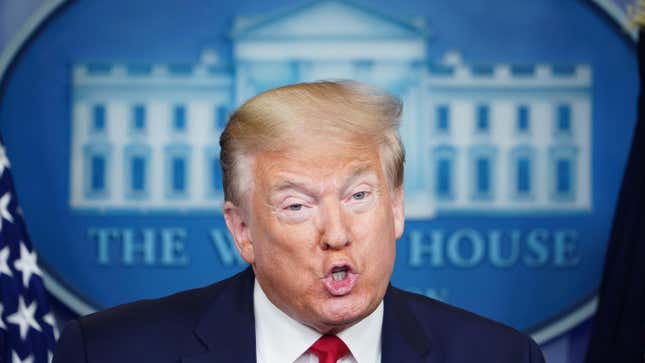Trump Never Stops Telling Us Who He Is
Politics

If it’s a cliché at this point to note how Donald Trump has normalized what should be grotesque, his reaction to Thursday’s night protests against police violence in Minneapolis is a blatant, and more pointed, reminder of exactly who he is. Whatever mask remained was ripped away and replaced by a rhetorical white hood when, after midnight on Friday morning, Trump typed out two tweets in response to the protests in Minneapolis after the murder of George Floyd by the police, in which he called protesters “thugs,” threatened to send the National Guard to the city, and warned, “when the looting starts, the shooting starts.”
You’d be correct in thinking that phrase calls to mind the language of outright racists during the ’60s—it was, appropriately enough, a phrase most notably uttered by Walter Headley, Miami’s chief of police in 1967, who gloated that his crackdown on the city’s civil rights activists had worked because, in the words of a news report from the time, “he let the word filter down, ‘When the looting starts, the shooting starts.’” To Trump, white people protesting stay-at-home orders with assault rifles are “very good people;” black people demanding that the state recognize their full humanity are “thugs” who deserve to be shot, the looting of multinational corporations a far more serious crime in Trump’s mind than the killing of a black man by police officers.
-

-

-

-

-

-

-

-

-

-

-

-

-

-

-

-

-

-

-

-

-

-

-

-

-

-

-

-

-

-

-

-

-

-

-

-

-

-

-

-








































